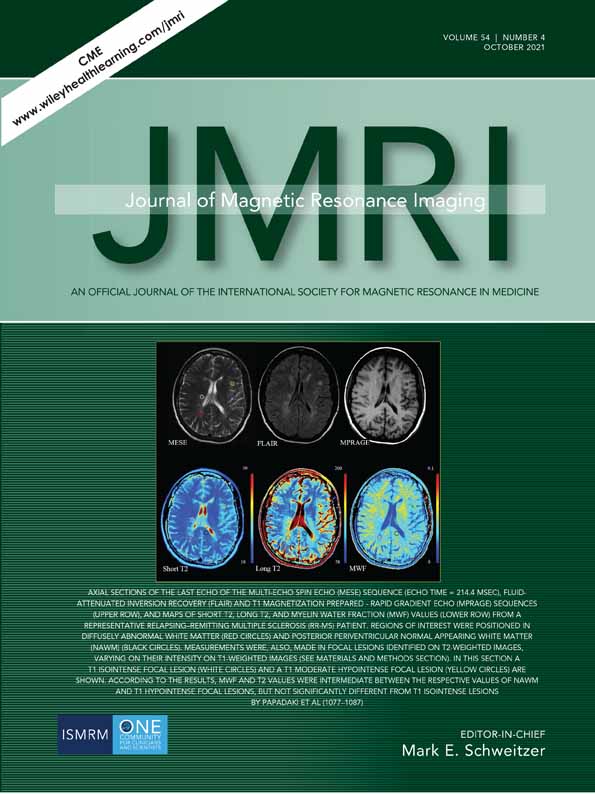Amide Proton Transfer-Weighted Imaging and Multiple Models Diffusion-Weighted Imaging Facilitates Preoperative Risk Stratification of Early-Stage Endometrial Carcinoma
Nan Meng, Ting Fang, and Pengyang Feng contributed equally to this work and should be considered co-first authors.
Abstract
Background
Endometrial carcinoma (EC) risk stratification is generally based on histological assessment. It would be beneficial to perform risk stratification noninvasively by MRI.
Purpose
To investigate the application of amide proton transfer-weighted imaging (APTWI), monoexponential, biexponential, and stretched exponential intravoxel incoherent motion (IVIM), and diffusion kurtosis imaging (DKI) for the evaluation of risk stratification in early-stage EC.
Study Type
Prospective.
Population
Eighty patients with early-stage EC (47 classified as low risk, 20 as medium risk, and 13 as high risk by histological grade and International Federation of Gynecology and Obstetrics stage).
Field Strength/Sequence
T1-weighted imaging, T2-weighted imaging, IVIM, APTWI, and DKI MRI at 3 T.
Assessment
The magnetization transfer ratio asymmetry (MTRasym [3.5 ppm]), apparent diffusion coefficient (ADC), diffusion coefficient (D), pseudo diffusion coefficient (D*), perfusion fraction (f), distributed diffusion coefficient (DDC), water molecular diffusion heterogeneity index (α), mean kurtosis (MK), and mean diffusivity (MD) were calculated and compared between low-risk and non-low-risk groups.
Statistical Tests
Individual sample t test, analysis of variance, and logistic regression. A P-value <0.05 was considered statistically significant.
Results
The α, ADC, D, DDC, and MD were significantly higher and the f, MK, and MTRasym (3.5 ppm) were significantly lower in the low-risk group than in the non-low-risk group. The difference in D* between the two groups was not significant (P = 0.289). MTRasym (3.5 ppm), D, and MK were independent predictors of risk stratification. The combination of these three parameters was better able to identify low- and non-low-risk groups than each individual parameter.
Data Conclusion
The IVIM, DKI, and APTWI parameters have potential as imaging markers for risk stratification in early-stage EC.
Level of Evidence
2
Technical Efficacy
Stage 3




